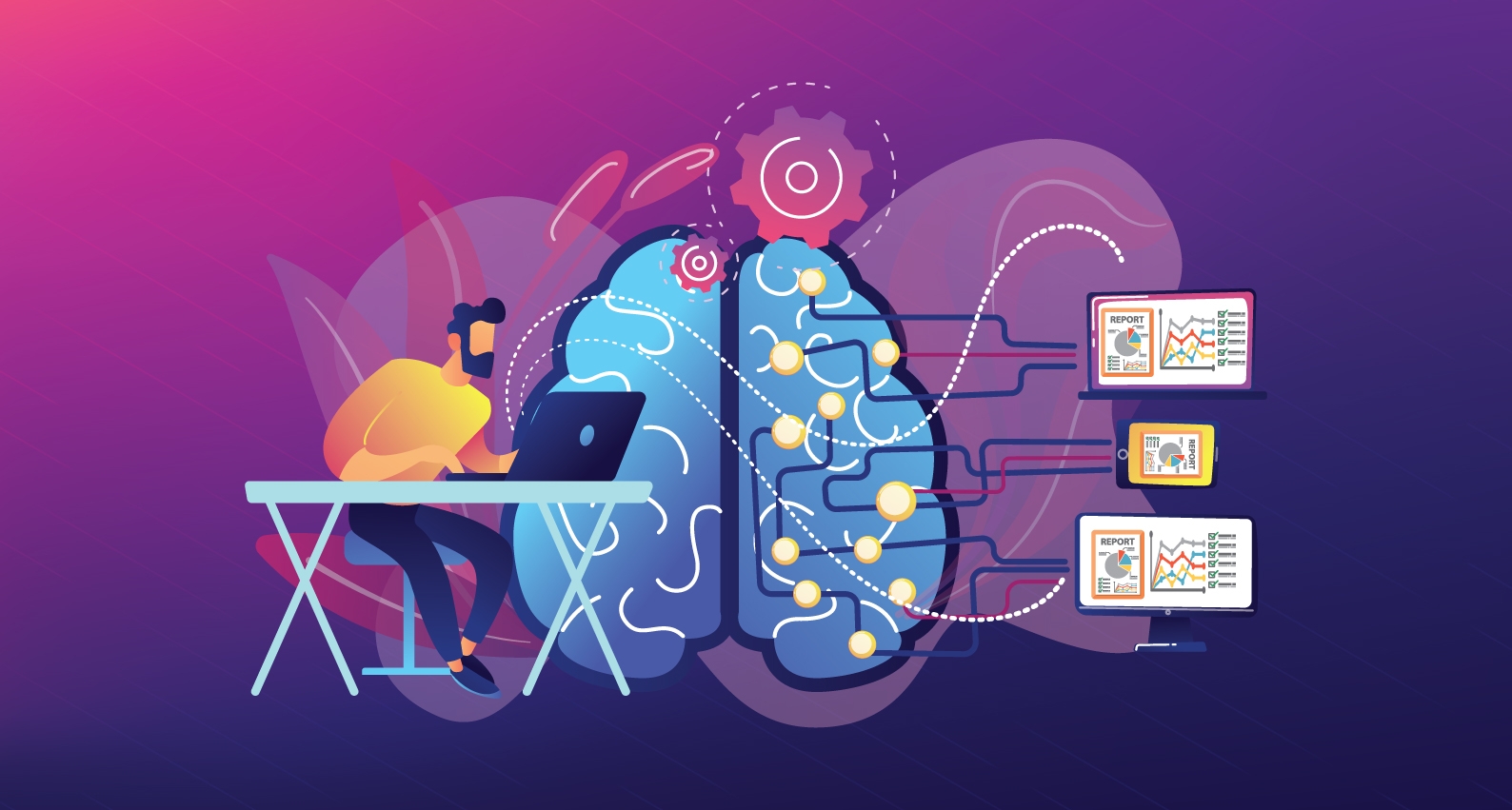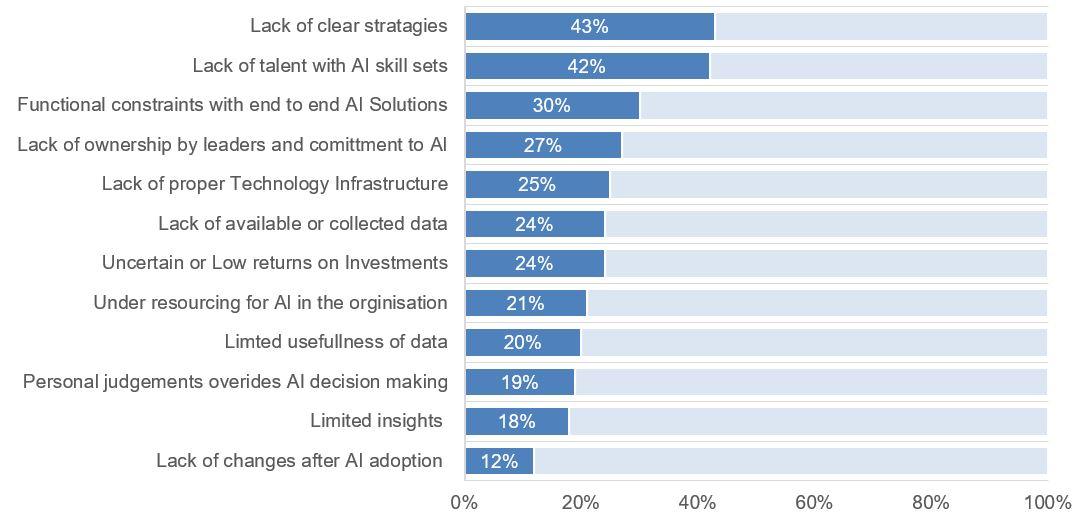AI To Aid in Decision-making During Pandemic
Published on 08 Apr, 2020

In today’s technology-driven world, artificial intelligence (AI)-enabled devices are more of a necessity than luxury. With more enterprises going online, AI is increasingly becoming relevant. It is also playing a significant role in fighting the global pandemic at various levels. While there are challenges in the adoption of AI, implementing the technology will only ensure organizations are better prepared for similar crises in future.
Artificial intelligence (AI) and machine learning (ML) are disruptive technologies that can change the way businesses operate, from automation of monotonous repetitive tasks to complex decision-making.
AI or MI enables a machine or computer to simulate human behavior and perform a task. The software and algorithms used to create AI can imitate human intelligence and enable the machine to think, apply reasoning, solve problems and learn.
In today’s IoT-connected world, we are constantly surrounded by AI-supported devices. These devices acknowledge our verbal orders, drive vehicles and demonstrate intelligence by giving us right information instantly or directing us to our destination. One of the major reasons why AI will soon become a necessity is its ability to judge situations without involving emotions or biases.
Role during COVID-19 pandemic
AI is playing a key role in the healthcare sector since the outbreak of coronavirus. Using it, over 40,000 research reports and studies on COVID-19, SARS and other related coronaviruses have been scanned to gain a better understanding of the disease. These datasets are freely available for ML readability. Therefore, researchers are now able to apply natural language processing (NLP) algorithms to speed up the invention of vaccines.
China is using temperature screening, powered by advance AI capabilities, in subways and railway stations to check the spread. These systems can screen people from a distance for high temperature within just a few minutes, and identify a potentially infected person, stopping him from exposing others to the virus.
AI-enabled robots and drones are being used for disinfecting and supplying essentials in some hospitals.
Hence, it is an important weapon in the fight against the pandemic.
Other sectors
Various industries such as automotive, telecommunications, financial institutions, and restaurants, are successfully implementing AI:
- Reactive Machines – It does not rely on experience to find solution to a problem. An interesting example of this would be smartphone games. The in-built software plays the role of a competitor, anticipates the moves by the players and reacts to the situation accordingly. The logarithms fed into the system are as per the rule of the game, and there is no strategy based on previous games played.
- Limited Memory – Here the machine or device undertakes a task and takes decision after analyzing environmental conditions. This technology has been widely implemented in autonomous cars.
- Theory of Mind – This advanced AI helps machines understand human thoughts, feelings and reactions. Understanding complexities of human emotions helps in ascertaining the behavior. The concept also entails creating self-awareness in machines. With increasing use of AI, it is important that machines be embedded with consciousness for accountability of actions.
Machines built on AI platform are easily adaptive and can handle projects requiring planning, ML, human language processing, robotics, storing and analyzing data, and drawing conclusions. They reduce human efforts by enhancing speed and accuracy.
Adoption of AI
Today, AI is increasingly used in the finance industry, transforming the way we handle money. It is helping in streamlining and optimizing processes that were otherwise very time-consuming.
In quantitative trading, AI and ML are used to predict stock market behavior. Using AI, thousands of press releases, news feeds, company disclosures, financial statements, company filings, earnings calls, and trends in other sectors are scanned, on which prediction is based. AI facilitates auto analysis of historic and current trends of a stock, and comparison vis-à-vis major parameters influencing the market, eliminating hours and even days of manual work by research analysts. Quantitative trading has benefited immensely from AI and ML that have helped in lowering financial risks.
Companies are building financial models using AI and ML. Large sets of data are sourced automatically and thereafter consolidated on a single location in the client’s cloud-based platform.
The future
AI, like every technology, is not immune to disadvantages. Initiation and implementation are expensive, while integration with existing systems may be fraught with several challenges. At times, an organization’s entire technical infrastructure may need to be overhauled. Getting the right talent to support AI and ML requirements is not easy either. Those with the required skillset may come at a high cost. Furthermore, excessive use of AI would render manual efforts redundant, leading to unemployment.
A global financial survey conducted by Mckinsey revealed the challenges in implementation of AI.
Most Significant Barriers Faced by Organizations in Implementing AI

Figure - Survey conducted by Mckinsey.com
Considering the significant advantages it offers, AI is a critical technology. It has reduced cost, made life better by reducing risks, and speeded up decision-making. Due to these reasons, it has emerged as a potent tool to deal with the current crisis and usher in transformation across sectors, not just healthcare.
With automation becoming a need of the hour more than ever before, as businesses look to offset the impact of the pandemic on operations, AI’s relevance has only increased. Had more factories adopted AI, businesses would have been better equipped to deal with present adversities.
AI has certainly increased efficiency, accuracy and reliability across industries. However, this does not undermine the importance of human intervention. The best way forward, therefore, is to ensure that machine and human intelligence go hand in hand.


